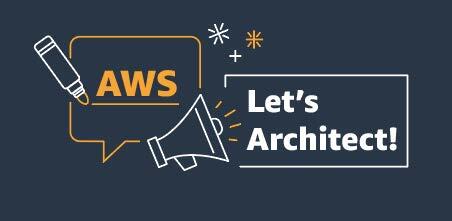AWS Architecture Blog
Category: AWS Lambda
Create a serverless custom retry mechanism for stateless queue consumers
In this post, we propose a solution that handles serverless retries when the workflow’s state isn’t managed by an additional service.
Top Architecture Blog Posts of 2024
Well, it’s been another historic year! We’ve watched in awe as the use of real-world generative AI has changed the tech landscape, and while we at the Architecture Blog happily participated, we also made every effort to stay true to our channel’s original scope, and your readership this last year has proven that decision was […]
Efficient satellite imagery supply with AWS Serverless at BASF Digital Farming GmbH
BASF Digital Farming’s mission is to support farmers worldwide with cutting-edge digital agronomic decision advice by using its main crop optimization platform, xarvio FIELD MANAGER. This necessitates providing the most recent satellite imagery available as quickly as possible. This blog post describes the serverless architecture developed by BASF Digital Farming for efficiently downloading and supplying […]
Let’s Architect! Serverless developer experience in AWS
Accelerate your serverless feedback loop with game-changing AWS developer tools: generate tests with AI, visualize DynamoDB schemas locally, optimize Lambda memory, and more—all within a streamlined local IDE experience.
How an insurance company implements disaster recovery of 3-tier applications
A good strategy for resilience will include operating with high availability and planning for business continuity. It also accounts for the incidence of natural disasters, such as earthquakes or floods and technical failures, such as power failure or network connectivity. AWS recommends a multi-AZ strategy for high availability and a multi-Region strategy for disaster recovery. […]
How to build custom nodes workflow with ComfyUI on Amazon EKS
ComfyUI is an open-source node-based workflow solution for Stable Diffusion and increasingly being used by many creators. We previously published a blog and solution about how to deploy ComfyUI on AWS. Typically, ComfyUI users use various custom nodes, which extend the capabilities of ComfyUI, to build their own workflows, often using ComfyUI-Manager to conveniently install and manage their […]
Automating multi-AZ high availability for WebLogic administration server with DNS: Part 2
In Part 1 of this series, we used a floating virtual IP (VIP) to achieve hands-off high availability (HA) of WebLogic Admin Server. In Part 2, we’ll achieve an arguably superior solution using Domain Name System (DNS) resolution. Using a DNS to resolve the address for WebLogic admin server Let’s look at the reference WebLogic […]
How CyberArk is streamlining serverless governance by codifying architectural blueprints
This post was co-written with Ran Isenberg, Principal Software Architect at CyberArk and an AWS Serverless Hero. Serverless architectures enable agility and simplified cloud resource management. Organizations embracing serverless architectures build robust, distributed cloud applications. As organizations grow and the number of development teams increases, maintaining architectural consistency, standardization, and governance across projects becomes crucial. […]
How Wesfarmers Health implemented upstream event buffering using Amazon SQS FIFO
Customers of all sizes and industries use Software-as-a-Service (SaaS) applications to host their workloads. Most SaaS solutions take care of maintenance and upgrades of the application for you, and get you up and running in a relatively short timeframe. Why spend time, money, and your precious resources to build and maintain applications when this could […]
Tenant portability: Move tenants across tiers in a SaaS application
In today’s fast-paced software as a service (SaaS) landscape, tenant portability is a critical capability for SaaS providers seeking to stay competitive. By enabling seamless movement between tiers, tenant portability allows businesses to adapt to changing needs. However, manual orchestration of portability requests can be a significant bottleneck, hindering scalability and requiring substantial resources. As […]









